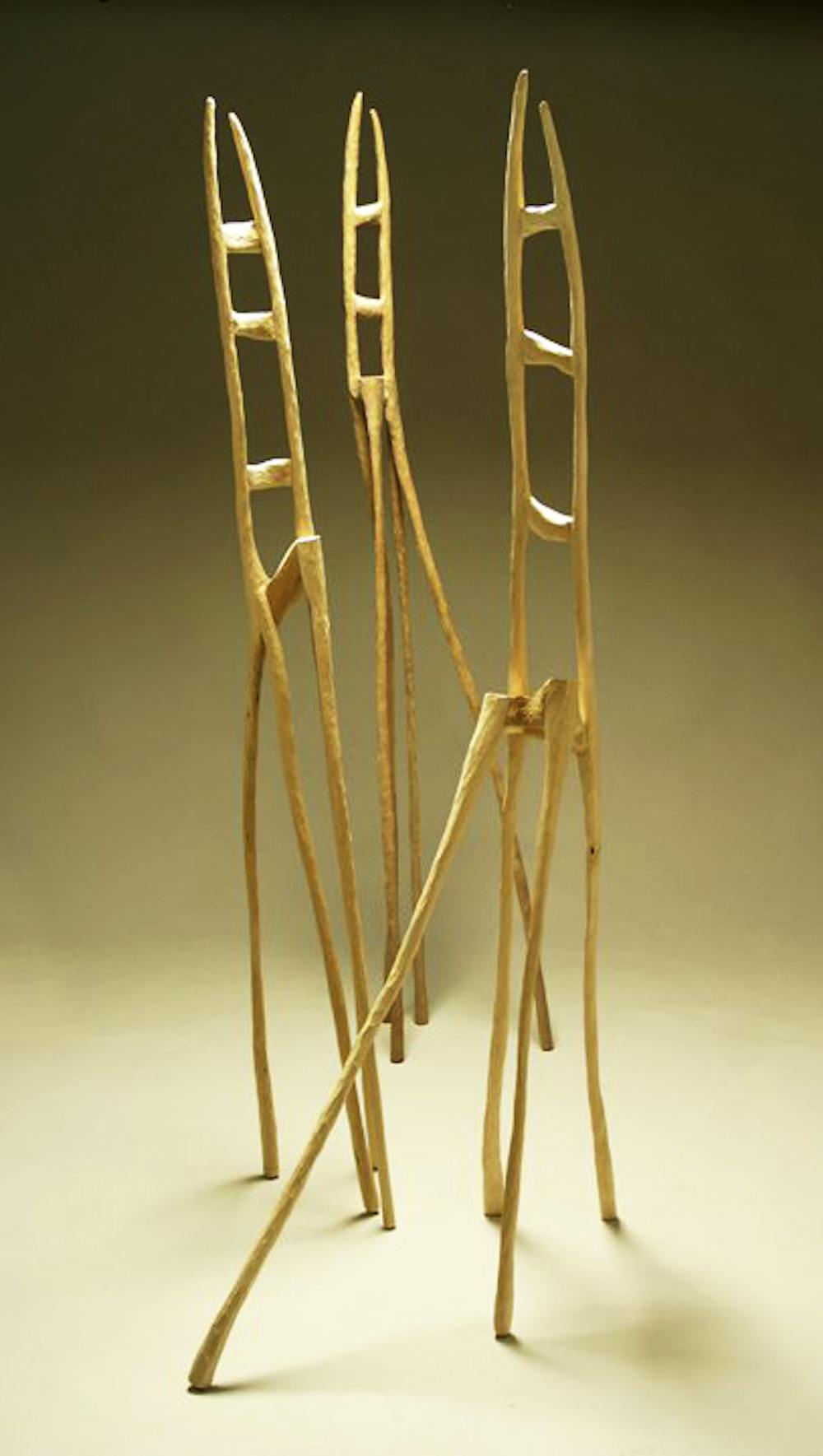Neatly tucked amongst conference rooms and the busts of Philadelphians of yore, the display cases of the "Dysfunctional Furniture" exhibit in City Hall are barely acknowledged, let alone visited. The Art in City Hall Advisory Council must have taken the theme of ‘dysfunctional’ pieces to heart when they chose to present the works in an almost deserted hallway; the only visitors, at least in the one hour I spent there, consisted of smartly dressed businessmen briskly walking by. But despite being easily overlooked, the works shown here confront the idea of functionality in unique and interesting ways.
[media-credit name="Apollinaire Renamed Lydia Hunn" align="alignleft" width="300"][/media-credit]A particularly notable approach to the theme, Chris Todd’s Tripartite addresses what he calls “one of the most interacted–with objects in our society,” the chair. Playing with the idea that “much of our waking life is spent sitting,” the structure of Todd’s chairs mimic the physicality of the human body. The artist emphasizes his use of wood as an organic medium by intentionally incorporating imperfections, leaving bumps and ridges on the surface and even adding more of them to the finished work. The elongated legs and sloping postures of the chairs reflect the walking man, putting an interesting twist on the role of furniture and its relation to contemporary society.
Contrary to Todd and the majority of the other featured artists (Avendano, Inman-Bellofatto, Fink, Eisner and Nii Owoo), Michelle Post strays away from seating–related furniture and explores the realm of… well, I’m actually not quite sure. Resembling a combination of a bookshelf, desk and dresser, Bless You is an impressive creative leap. Post further establishes dysfunction in an object with an already ambiguous purpose by covering the entire surface with novelty salt and pepper shakers. From kneeling Precious Moments characters to various cartoon animals, these shakers are glued to the outside of the piece, removed from their own function while simultaneously limiting that of the rest of the piece. Post pulls themes of religion into the work by incorporating crosses and images of The Last Supper, sacred icons that further confuse the object’s practical use.
Tucked into the far right end of the hallway, Penn alum and current Drexel professor Lydia Hunn’s piece lies lonely and forlorn in the last display case in the exhibit. Whether this particularly awful location is the universe’s response to her conversion to the Drexel–ian dark side or just a jab at the pairing of an ambiguous work with a frustratingly vague artist’s statement, is beyond me.
Regardless, Hunn’s Apollinaire Renamed, a dismantled bed–frame loosely painted in hues of white, pink, yellow, red and black, maintains a natural and aesthetically pleasing arrangement. The juxtaposition of chipping, unpolished wood with bold stripes of color, some of which drip beyond their seemingly intended borders, is particularly striking. Hunn’s work forces the viewer to entertain the contradictory ideas of the organic and manipulated in light of the theme, functionality.
Although it lacks a space conducive to artistic display, the "Dysfunctional Furniture" exhibit effectively questions contemporary standards of functionality and engages the viewer in its use of recognizable objects in unusual ways.
[media-credit name="Tripartite, Chris Todd" align="alignright" width="169"][/media-credit]
DYSFUNCTIONAL FURNITURE Now through 2/25 Free Admission 116 City Hall First and second floors (215) 686–9912







